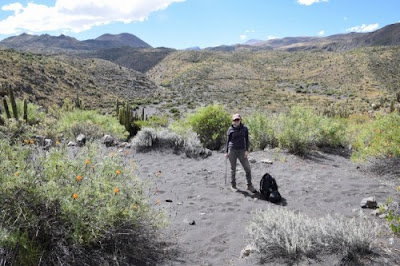This past June 11-14 was the
Fiesta de San Antonio de Padua. We attended the festival as part of PAVA’s
continuing documentation and efforts to share observations of the yearly cycle
of festivals and cultural traditions in the town of Andagua and the Southern
Peruvian Andes. In Andagua and several surrounding highland communities, San
Antonio de Padua is the patron saint of muleteers (arrieros) and llama herders (llameros)
(though this is not the case for all the world).
The Fiesta de San Antonio is a
well-attended festival in Andagua, beginning Saturday afternoon with much
feasting, music and dance. Community members and musicians parade through town
playing music, singing and dancing in the street while they walk to varying
homes where everyone enjoys one another’s company and spends time eating,
drinking, dancing to celebrate the festival, its history and the beneficiaries
supporting the festival. The festival is also often coordinated with a wedding
and the wedding couple also feature prominently as beneficiaries and recipients
of the good will of the festival. The community, as always, exudes generosity.
During the festival community
members dress and dance as arrieros or llameros. For much of the festival, the
llameros lead the dancing and procession, adorning colorful textiles and hats with a matching suit underneath. They also carry the hides of small llamas,
dancing and singing in Quechua. Similarly, the arrieros carry the materials
they would bring with them – packs, pots, pans, and a stuffed animal of a dog,
their traveling companion. In the past and continuing today, both llameros and
arrieros lead long-distance caravan trips following ancient and new roads that
traverse the Andes. Here again, the paths and muleteers and llama herders
exemplify the tangled legacies of Spanish colonialism and pre-Hispanic
traditions and histories.
Nestled in the high mountains
bridging the coast and the rest of the Andes and jungle, this region of the
Southern Andes, like many other areas, is known for the important role trade
and caravans played in shaping the fabric of Andean lives. San Antonio is the
patron saint of varying practices and traditions across the world, with his celebration in the Andes demonstrating how local influences shape world religions.
Then Sunday morning the
community takes the altar and figure of San Antonio, decorated in the
belongings of an arriero, and parade to the limits of town where a small stone
chapel and large walled plaza stand dedicated to San Antonio de Padua. The
plaza and chapel lie on the folds of a sloping and abandoned terrace hill that
rises from the town up to the pampa (highland plains). An ancient stone staircase leads people up
to the plaza. The earth and stones have melted and slid along the folds of the
hill leaving the staircase uneven and sloping, revealing a living landscape
shaped by human and natural forces. The chapel is also compelling for PAVA
since it is situated at the edge of one of the largest archaeological sites in
Southern Peru, recently documented by PAVA 2015.
San Antonio spends the day at the chapel in his name, waiting until mass is held there in the afternoon.
More community members gather in the plaza for mass, including other arrieros
as well as llameros who have arrived with several llamas. The llamas congregate
in the corner of the plaza, occasionally wandering away, only to be herded and regrouped
by the llamero swinging a rope sling. The setting offers a striking resemblance
to pre-Hispanic and colonial open-air church plazas, and in contrast to the
enclosed walled spaces of churches. When
the mass ends San Antonio is carried back to the church, and now accompanied by
llamas.
Night descended as we walked from
the Chapel of San Antonio returning it to the main town church. On the way the
procession stopped at another church that lies at the edge of town. This is the
church of San Antonio. In the plaza in front of the church there is a small statue of a horse and
mule with bags loaded on it adorning a fountain; it is a church for the
arrieros. The effigy of San Antonio enters the church, and soon departs
promenading around the entrance to the church before returning to the plaza and
main church. More fireworks are set, as the llamas jaunt around the plaza before
soon returning to their homes in the higher valleys and puna that are just
below the towering mountain peaks and volcanoes, such as Coropuna.
The festival continues for
another day. While festivals offer compelling glimpses into local practices and
traditions, they do not explain entire social lives. Festivals mark and accent
daily rhythms articulated with yearly and seasonal changes, as local community
members continue with the hard daily work. And, PAVA is dedicated to learning
more about and tracing the histories of the daily practices and traditions in
Andagua that have both endured and changed over time and continue to do so.











